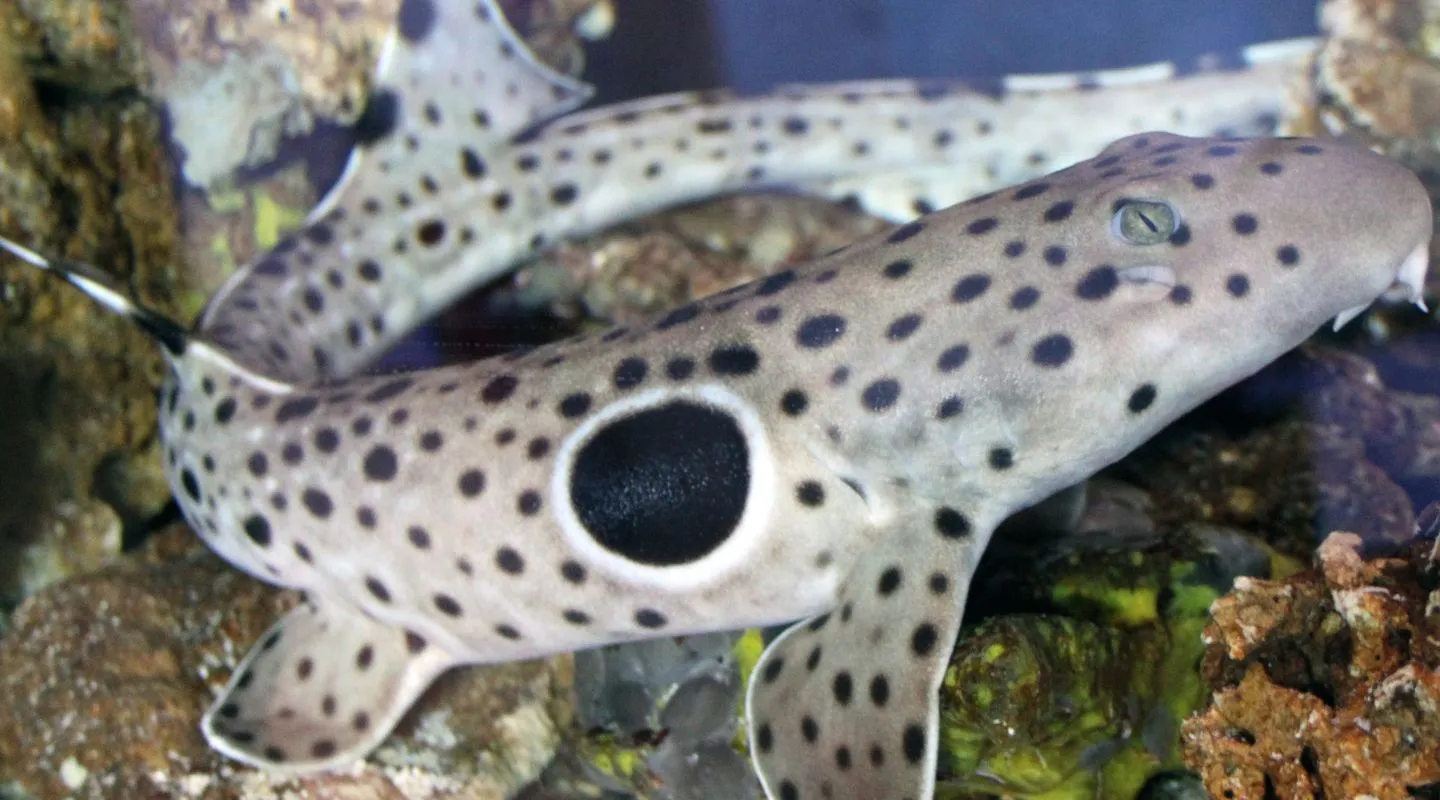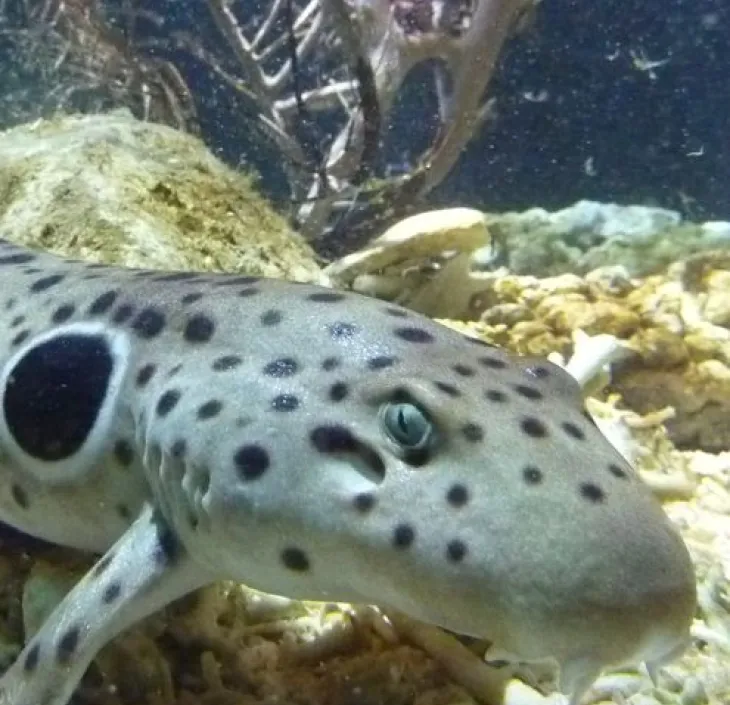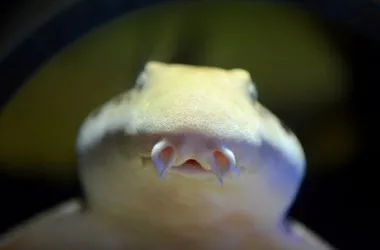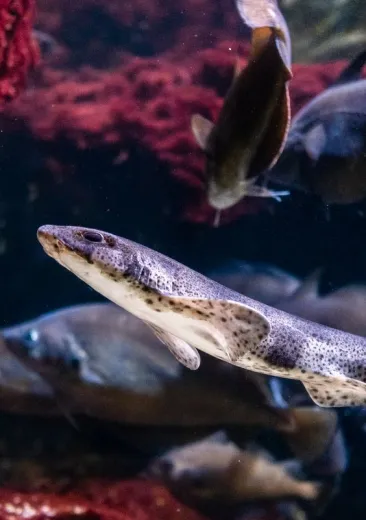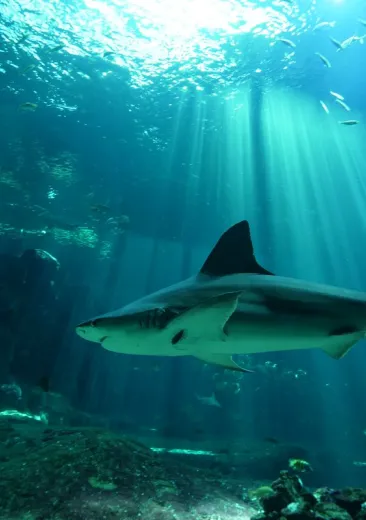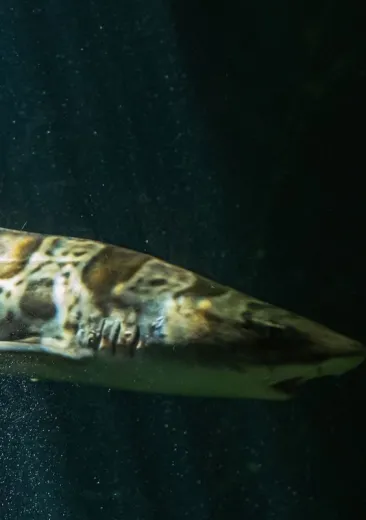It can survive for a time in poorly-oxygenated waters such as a pool at low tide; its brain shuts down any non-essential functions.
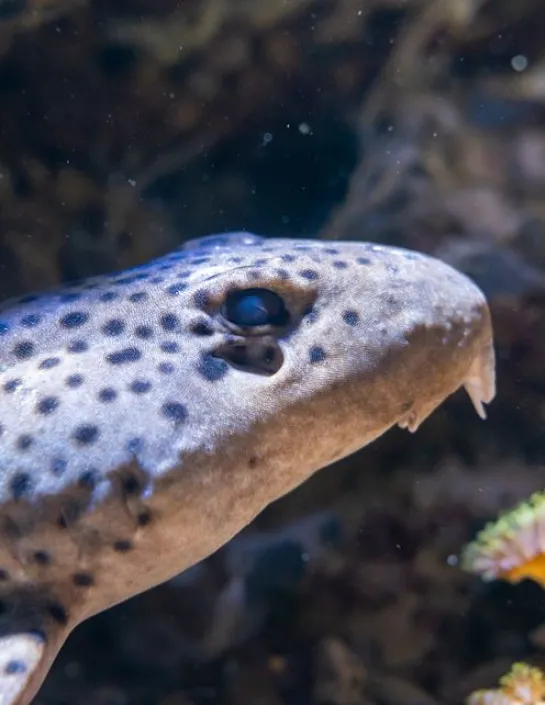
Identity card
Epaulette Shark
- Scientific name:
- Hemiscyllium ocellatum
- Family:
- Hemiscylliidae
- Class:
- Chondrichthyes
- Phylum:
- Chordata
- Year of description:
- Bonnaterre, 1788
- IUCN Status:
- Least Concern
- CITES-status:
Not evaluated
- Distribution:
-
Western Pacific Ocean, in the coral waters of northern Australia and Papua-New Guinea.
- Habitat:
-
The epaulette shark lives mainly in shallow, tropical coastal waters, on coral flats.
- Size:
It grows up to 1.10 m long.
- Diet:
-
The epaulette shark feeds on small fish, worms and crustaceans.
- Conservation program:
The epaulette shark is part of a European conservation program in which Nausicaá participates (Monitoring program).
